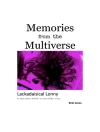‘A Christmas Carol’ is a novella by Charles Dickens. It was first published in London by Chapman & Hall on 19 December 1843. The novella met with instant success and critical acclaim. ‘Carol’ tells the story of a bitter old miser named Ebenezer Scrooge and his transformation into a gentler, kindlier man after visitations by the ghost of his former business partner Jacob Marley and the Ghosts of Christmases Past, Present and Yet to Come.
The book was written and published in early Victorian era Britain, a period when there was strong nostalgia for old Christmas traditions together with the introduction of new customs, such as Christmas trees and greeting cards. Dickens’ sources for the tale appear to be many and varied, but are, principally, the humiliating experiences of his childhood, his sympathy for the poor, and various Christmas stories and fairy tales.
The publication of three influential books spurred the interest among the Victorians for a nostalgic Christmas: Davies Gilbert’s ‘Some Ancient Christmas Carols’ (1822), William Sandys’s ‘Selection of Christmas Carols, Ancient and Modern’ (1833), and Thomas Kibble Hervey’s ‘The Book of Christmas’ (1837). That interest was further stimulated by Prince Albert, Queen Victoria’s German-born husband, who popularized the German Christmas tree in Britain after his marriage to Victoria in 1841. At this time too, the first Christmas card was introduced in 1843, and a revival in carol singing was undertaken. Hervey’s study of Christmas customs attributed their passing to regrettable social change and the urbanization of England.
A propos de l’auteur
Charles John Huffam Dickens (7 February 1812 – 9 June 1870) was an English writer and social critic. He created some of the world’s best-known fictional characters and is regarded by many as the greatest novelist of the Victorian era. His works enjoyed unprecedented popularity during his lifetime, and by the 20th century critics and scholars had recognised him as a literary genius. His novels and short stories enjoy lasting popularity.












